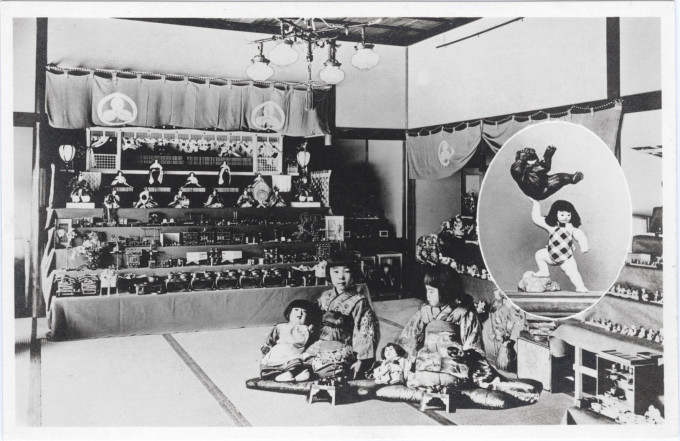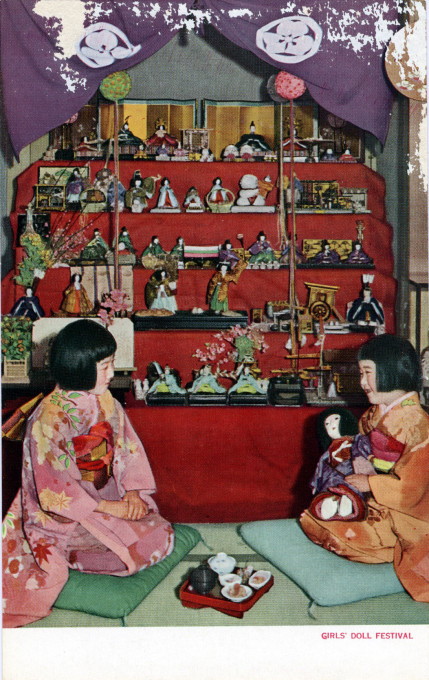“There is no festival given in Japan that brings more joy to the hearts of little Japanese girls than the Girls’ Doll Festival, Hinamatsuri, for this time their very own.
“The festival is celebrated each March 3rd and is held according to a set form and the ceremonial arrangement of miniature dolls. During this day little maids brightly clad in holiday kimonos and wearing shining red lacquer geta on their tiny feet animate the streets of every city and village in Japan. Even the tiniest toddler wears a gay patterned kimono, bright undergarments showing their red borders here and there, and obi shot with gold threads.
“… This festival, which contributes so much happiness to little girls during its brief season, is capable of many lines of evolution, especially in those that lead toward patriotic ideals and toward the development of ethical culture and moral character. It also symbolizes paternalism in its highest conception. In the higher, or nationalistic sense, it represents a loving appreciation of the thoughtful care given by the Emperor to his ‘children’; in the lesser conception it embraces the family as a unit. Into this loyalty is born the protective instinct of the ant who works and toils unto the end fo the good of all, without thought for individual existence.
“Nothing in this wide world can be sweeter or more enchanting than a little Japanese girl, brightly dressed in kimono and sash, acting as hostess at a dolls’ festival, receiving calls from little friends and schoolmates, and entertaining the older members of the family together with their friends.
“Festival dolls are always arranged in set ceremonial form in rows, on tiers or shelves, raised like a dais and covered with bright red cloth. Dolls representing the Emperor and Empress are dressed in elaborate ancient costumes of the finest workmanship, as are the court ladies and the court musicians. Their arrangement is called the ‘palace arrangement’ and is more elaborate and elegant than the other ones, which have a more democratic placement and environment.
“… Many of the dolls displayed during the Girls’ Doll Festival have been handed down from generation to generation, priceless heirlooms of the family … When the festival comes to a close, the tiers of dolls and their accessories are carefully packed away, to remain untouched until the following March, a year hence, when they will remerge from their long hiding place as fresh and as bright as if newly purchased.
– The Happy Hina Matsuri: Japan’s Festival of Dolls, by Charlotte Lehnhausen, Japan: Overseas Travel Magazine, February 1930.
Hinamatsuri Doll Festival (Girl’s Day), c. 1940.
1940s • Amusements & Recreations • Arts & Culture
Tagged with: Boys' Day, Girl's Day, Hina-matsuri
Please support this site. Consider clicking an ad from time to time. Thank you!



